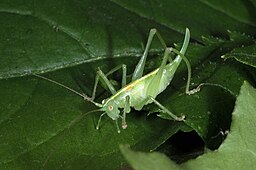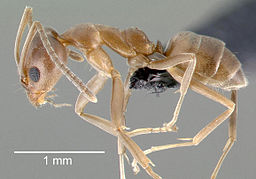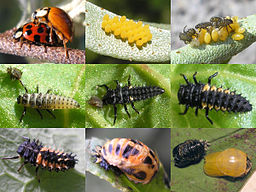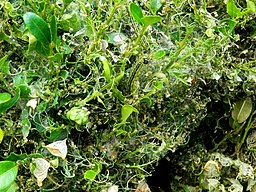 |
Black locust gall midge | Status LU: established. 1st record: 2006. |
 |
Amerikanesch Galméck | Status Eur.: established. |
 |
n/a | RA: ISEIA: C3. Harmonia+: n/a. |
 |
Amerikanische Gallmücke | Wikipedia:  | Wikispecies: n/a (2020) | CABI | Wikispecies: n/a (2020) | CABI |
 |
Robiniagalmug | Back to the list of invertebrates |
Contents
Brief description
 Obolodiplosis robiniae (Haldeman, 1847) has been recorded for the first time in Italy (Veneto) and in Europe in July 2003. Its natural distribution includes the eastern USA. The larvae of O. robiniae produce galls on the leaflets of Robinia pseudoacacia. In particular, the margins of leaflets are rolled downwards. Symptoms are recorded more commonly on the apical shoots (Duso et al 2005).
Obolodiplosis robiniae (Haldeman, 1847) has been recorded for the first time in Italy (Veneto) and in Europe in July 2003. Its natural distribution includes the eastern USA. The larvae of O. robiniae produce galls on the leaflets of Robinia pseudoacacia. In particular, the margins of leaflets are rolled downwards. Symptoms are recorded more commonly on the apical shoots (Duso et al 2005).
In 2004 the black locust gall midge was found in Czech Republic and Slovenia, in 2006 in Hungary, Slovakia, Serbia and Montenegro and also in Germany. In Belgium, the first galls were found in 2005, in Luxembourg in 2006, in France, Romania, Poland, Switzerland and England in 2007 and in the Netherlands in 2008 ((Schneider & Walisch 2009: 261).
Status and distribution in Luxembourg
Records of Obolodiplosis robiniae (Haldeman, 1847) in Luxembourg. Data source: Recorder-Lux, iNaturalist & GBIF, 2025-07-17.
In Luxembourg, Obolodiplosis robiniae (Haldeman, 1847) was first observed in 2006 by F. Feitz in Remich (Schneider & Walisch 2009: 161).
106 observations are documented in the mdata.mnhn.lu portal (MNHNL, iNaturalist & GBIF, 2020).
Risk assessment
ISEIA protocol
C3 (3+1+1+1) (Ries et al. 2017: 69).
Harmonia+ protocol
Not assessed yet.
Worldwide distribution
Bibliography
- CABI, 2019. Obolodiplosis robiniae (Haldeman, 1847). In: Invasive Species Compendium. Wallingford, UK: CAB International. URL: www.cabi.org/isc [accessed 2020-04-10]
- Duso C; Fontana P; Tirello P, 2005. Spread of the gall midge Obolodiplosis robiniae (Haldeman) injurious to black locust in Italy and Europe. (Diffusione in Italia e in Europa di Obolodiplosis robiniae (Haldeman), dittero cecidomiide neartico dannoso a Robinia pseudoacacia.) Informatore Fitopatologico, 55(5):30-33.
- MNHNL, iNaturalist & GBIF, 2020. Obolodiplosis robiniae (Haldeman, 1847) in MNHNL-mdata, online portal combining species observation from Recorder-Lux, iNaturalist and GBIF. National Museum of Natural History, Luxembourg. URL: https://mdata.mnhn.lu [accessed 2020-04-10]
- Ries, C., A. Arendt, C. Braunert, S. Christian, A. Dohet, A. Frantz, G. Geimer, M. Hellers, J. A. Massard, X. Mestdagh, R. Proess, N. Schneider & M. Pfeiffenschneider, 2017. Environmental impact assessment and black, watch and alert list classification after the ISEIA Protocol of invertebrates in Luxembourg. Bull. Soc. Nat. luxemb. 119: 63-70. [PDF 360 KB]
- Schneider, N. & T. Walisch, 2009. Sur la présence au Luxembourg d’Obolodiplosis robiniae (Haldeman, 1847) (Insecta, Diptera, Cecidomyiidae). Bull. Soc. Nat. luxemb. 110: 161-165. [PDF 470 KB]
Page content last updated on 2020-04-10.























